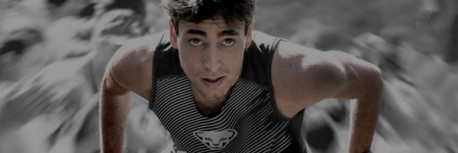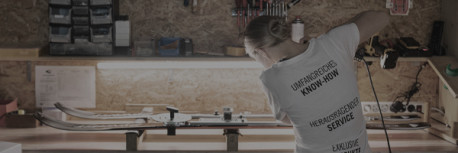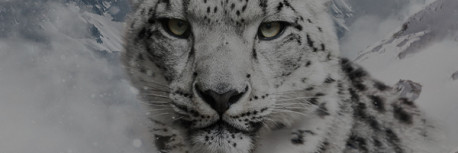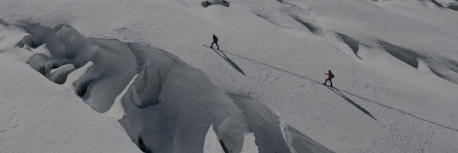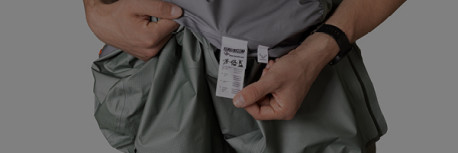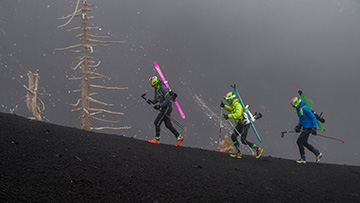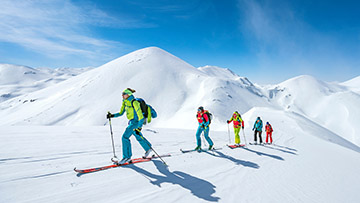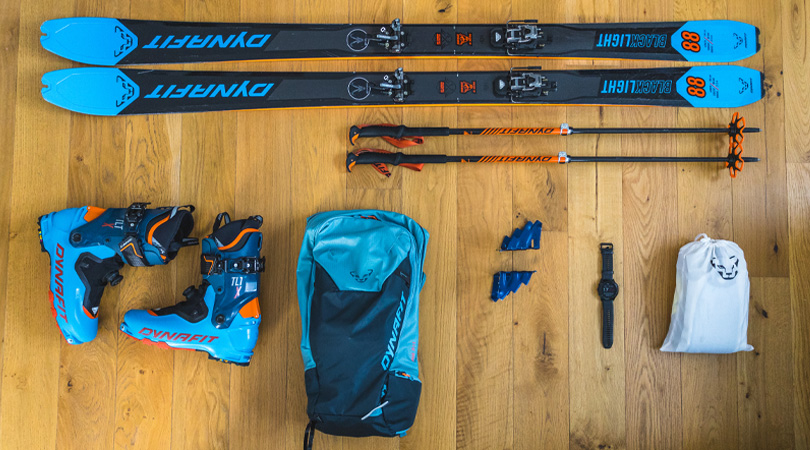Mountaineering, climate change and environmental protection. How do these fit together?
Climate change affects everything, and its impacts are visible on any alpine tour. Glaciers are shrinking, permafrost is thawing, and the weather doesn’t seem to follow rules anymore. Climate change has had a particularly devastating impact on high-alpine touring. Beyond the climate, images showing trash left on the most frequently climbed mountains are unfortunately commonplace. Can we still climb mountains with a clean conscience? Should we avoid alpine tours completely? What would environmentally responsible mountain sport look like, and what can each of us do to push back against the changing climate and to protect our environment? Here, a critical analysis.
Status quo: mountains and climate change
When it comes to changes in the climate, the Alps serve as a kind of European early warning system. What happens here is an indicator of what the rest of the world can expect in the future. Alpine temperatures are climbing significantly faster than global averages. For instance, according to a study by the German Alpine Club, temperatures in the eastern Alps have increased in the last 100 years by 2 degrees Celsius - double the average in the rest of the world. This has had grave consequences: The glaciers in the Alps have shrunk significantly, and in many places, permafrost is thawing. In winter, snowfall is not adequate to replenish the glaciers, and in summer water shortages are common. The weather has become ever more unpredictable. Extreme, often spontaneous weather changes occur, and wind speeds are increasing.
Melting glaciers, winters with below-average snowfall and increasing temperatures make high-alpine tours ever more challenging. Where the glaciers have retreated, the newly revealed terrain may make for difficult climbing. Mountain slopes and rock faces are now exposed to sunlight and ambient air, and the risk of rockslides and collapsing ice is increasing as the permafrost no longer binds the rock together. The result is that many classic high-alpine touring routes are no longer passable in summer. There is a higher overall risk of rockfall, especially in narrow, heavily used key sections such as the notorious Grand Couloir on Mont Blanc. Many huts are experiencing drastic water shortages, especially in the hotter summer months – the much-loved Prager Hut in the Venediger Group had to close its doors in August of 2022 and 2023 due to a lack of water. Unfortunately, this is not an isolated incident….
Having presented such a gloomy picture of the situation in the Alps, it’s perfectly valid to ask: Can we still venture into the mountains, especially on high-alpine tours? At DYNAFIT, we have a clear response to this: Yes, we can. And we would like to clarify our position on this subject.
DYNAFIT and mountain sports: our position
We love the mountains. They are our home and the place we go to recharge. A life without the mountains is unimaginable. We are firmly convinced that everyone who takes part in any form of mountain sport learns valuable life lessons including fellowship, humbleness, resilience, and much, much more.
To abandon the mountains despite the obvious problems is not an option for us. Quite the opposite. If you aren’t informed about something, you are likely not to care about it. On the other hand, if you love something, you’re prepared to protect it. Those who have seen the problems in the Alps want to push back against the current situation.
As individuals, we are powerless against things like rockfalls and rockslides. However, we can take appropriate steps while preparing for a tour: We can plan our routes proactively and takeappropriate equipment to minimize the risk of danger to ourselves and others. We can equip ourselves against sudden weather changes or stronger winds, and we can ensure that we have the correct footwear so we can safely traverse challenging rocky terrain. The most important thing we can do is to ensure that we interact with the mountain environment in a responsible way. We would like to present a few tips on how you might achieve this.
Small steps count: what each of us can do
“What I do doesn’t make a difference, anyway.” We hear this often, but we beg to differ. Each of us can make an effort – however small – to protect the environment and to reduce his or her individual CO₂ footprint. Some examples:
Travel
Turn the problem into a solution: Obviously, taking public transportation is much better than individually driving into the mountains. That goes without saying. But why not ride your bike to your next alpine tour, starting out straight from the front door? That way, your mountain adventure becomes a multi-sport adventure is also better for the enviroment.
Leave no trace!
Not leaving trash in the mountains ought to be self-evident. Unfortunately, we all know that this is not always the case. Trash is not just an aesthetic problem, it threatens plant and animal life, which has repercussions for the entire mountain ecosystem. The best thing you can do is to carry a stuff sack or a dry bag with you and use it to carry out your own trash and any discarded items you might find back down to the valley.
Respect and responsibility on tours
Even if the perfect vista opens up after a long stretch walking through a pine forest, do please stay on the marked trails and within sign-posted boundaries when you’re on a tour. If you are forging your own trail, make sure you know if and where protected wildlife zones exist. The habitat of many wild creatures is already under threat from climate change, and your incursion may just make their lives more difficult.
Behavior in alpine huts
Is a hot shower after your tour really necessary? Do you need a wi-fi connection when enjoying the company of others in a hut? In many huts, there has been a trend towards luxury facilities. Ask yourself honestly whether they are necessary. Even if that particular location is not currently experiencing a water shortage, providing hot water for a shower requires an enormous level of complexity including significant energy use. A quick wash -- which used to be the norm – is often all that’s needed.
Does it always have to be sausage sandwiches and bananas?
We don’t want to take away your daily bread or spoil the enjoyment of tropical fruit. However, you might consider packing locally grown apples instead of bananas, and substituting a vegetarian spread for meat loaf or salami. Produce that requires shorter transportation routes and foods that do not contain animal products are simply better for the environment.
Equipment: Maximizing lifespan instead of constantly buying new
Wearing items of apparel for a long time is not only good for your wallet, it places less of a burden on resources and on the environment. On our website, you can find tips and information on maintaining your gear to ensure that it lasts as long as possible.
DYNAFIT Lifetime Guarantee: our sustainability promise
Regardless of how well you take care of your equipment, if the quality isn’t right, it’s not going to last. At DYNAFIT, we hold ourselves and the things we make to the highest standards. We are confident in the quality and durability of our products, and we demonstrate this in our promise to you: The DYNAFIT Lifetime Guarantee.
On many products, we offer a 10-year guarantee, providing the item is registered online within 12 months of purchase. Over the course of the 10 years, we will do whatever we can to ensure that the product works as well as it did on the day it was purchased. At our headquarters in Kiefersfelden, Germany, we are creating an extensive Care & Repair Center where everything from touring ski boots to bindings to ski skins and jackets can be repaired. If the product qualifies for the Lifetime Guarantee, the repairs are at no charge for the first five years.


